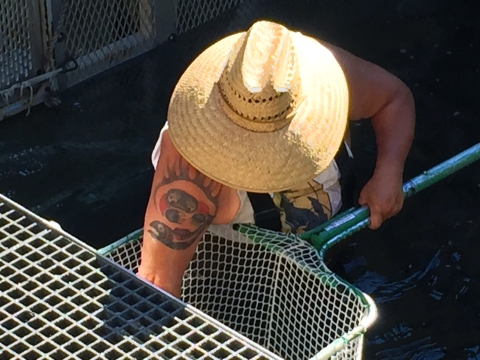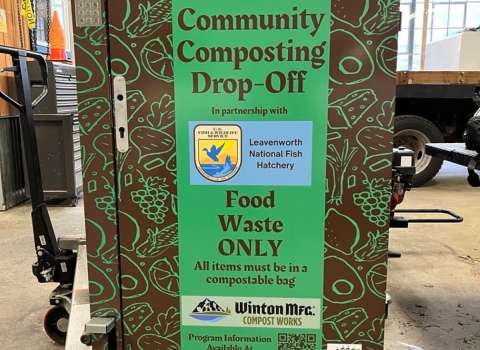This has been a great year for spring Chinook salmon returns in the Columbia River Basin.
Many things play into the survival and abundance of salmon, including river flow when they out migrate as juveniles, ocean conditions and available food while in the ocean, and then river conditions again when they return to spawn.
"The Columbia River Basin had a strong return of spring Chinook salmon this year,” said Kyle Hanson, Deputy Assistant Regional Director for Fish and Aquatic Conservation. “While we don’t know the exact causes, ocean conditions have been favorable for salmon survival and freshwater conditions this spring included abundant, cool water. This abundance of returning Chinook allowed our national fish hatcheries to achieve their many goals of meeting broodstock broodstock
The reproductively mature adults in a population that breed (or spawn) and produce more individuals (offspring or progeny).
Learn more about broodstock needs, surplussing adult fish to Tribes, and providing fish for harvest opportunities."
When salmon return to a hatchery, they swim into a holding pond and stay there until they are ready to spawn. At times, like this year, the Service has more returning fish than needed to create the next generation of salmon.
People ask all the time if the U.S. Fish and Wildlife Service sells excess salmon at our national fish hatcheries. The answer is no. The Service raises fish for the American people, not for profit, as part of our conservation mission.
These surplus salmon, however, do go to good use.
Extra fish not needed by our hatcheries go to the Tribes. The Service works closely with its Tribal partners to provide these extra salmon to their ceremonial and subsistence programs. Our hatcheries have already contributed thousands of surplus salmon to Tribes this year, including:
- Carson National Fish Hatchery contributed 282 to the Confederated Tribes and Bands of the Yakama Nation
- Little White Salmon National Fish Hatchery contributed 4,219 to the Confederated Tribes and Bands of the Yakama Nation and 670 to the Confederated Tribes of the Warm Springs of Oregon
- Warm Springs National Fish Hatchery contributed 218 to the Confederated Tribes of the Warm Springs of Oregon
- Leavenworth Fisheries Complex, which includes Leavenworth and Winthrop National Fish Hatcheries, contributed 6,366 to the Confederated Tribes and Bands of the Yakama Nation, the Confederated Tribes of the Colville Reservation, the Kalispel Tribe of Indians, the Spokane Tribe of Indians and Coeur d’Alene Tribe.
Native Americans have valued and used salmon and steelhead since time immemorial. These powerful fish provided bountiful food and useful materials, as well as meaningful cultural connections. They still do. Working with Tribes to support fish populations reminds us that tradition and values play a role in how we operate.
Certain areas of the Columbia River and tributaries are devoted to Tribal fisheries. Stop by Leavenworth National Fish Hatchery, in north-central Washington, in early June and you’re likely to see Tribal anglers at Icicle Creek. This spot was used for thousands of years by Native Americans, and they continue to have the treaty rights to fish on hatchery grounds.
Lower on the Columbia River, Drano Lake, near Little White Salmon National Fish Hatchery, is open exclusively to Tribal anglers on Wednesdays.
When Tribes collect fish from the hatchery, there is a palpable feeling of celebration as Tribal members work side by side with hatchery staff. Salmon are special, and we all appreciate their beauty, strength, and nourishment, as well as their significance in tradition and ecology.



